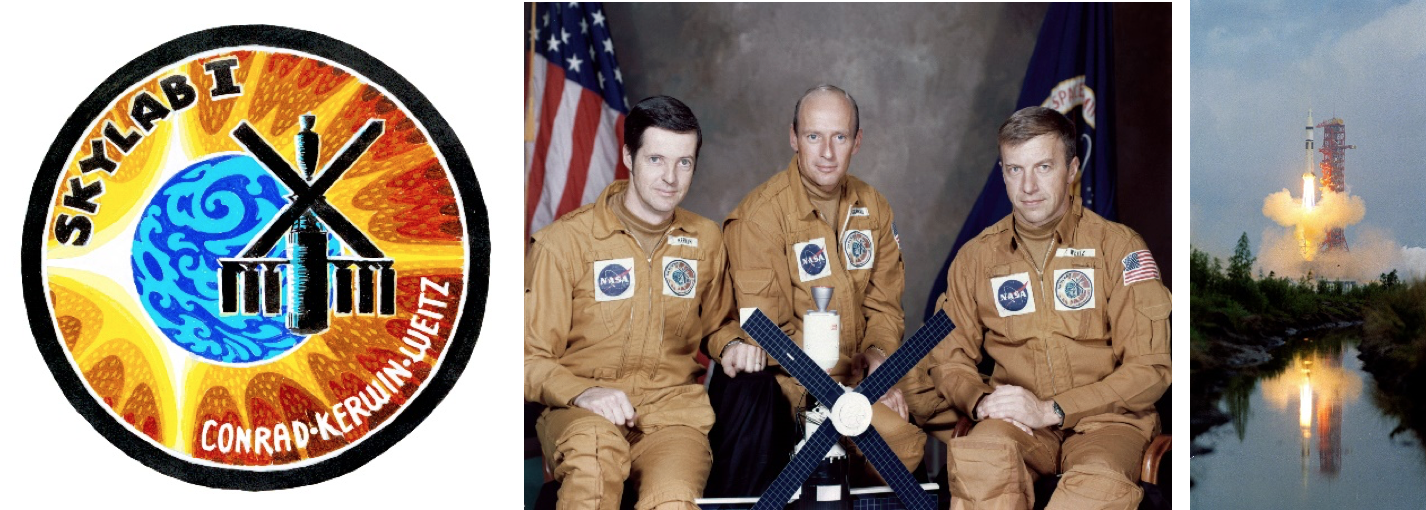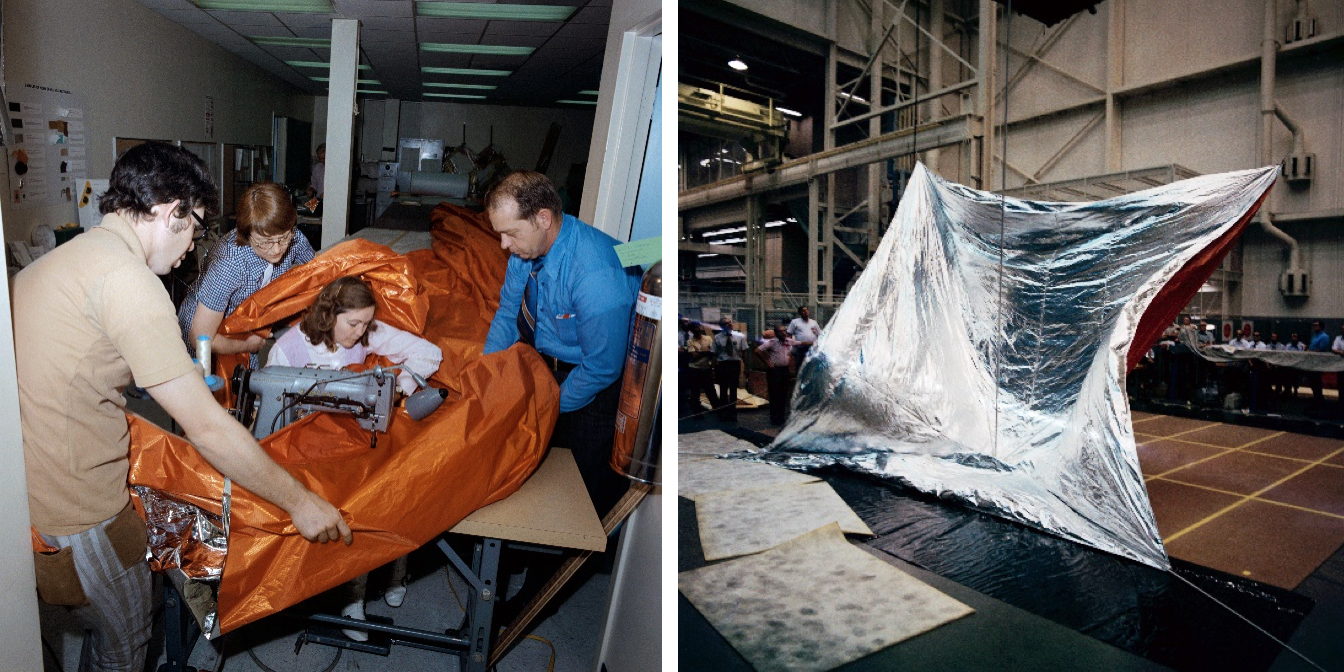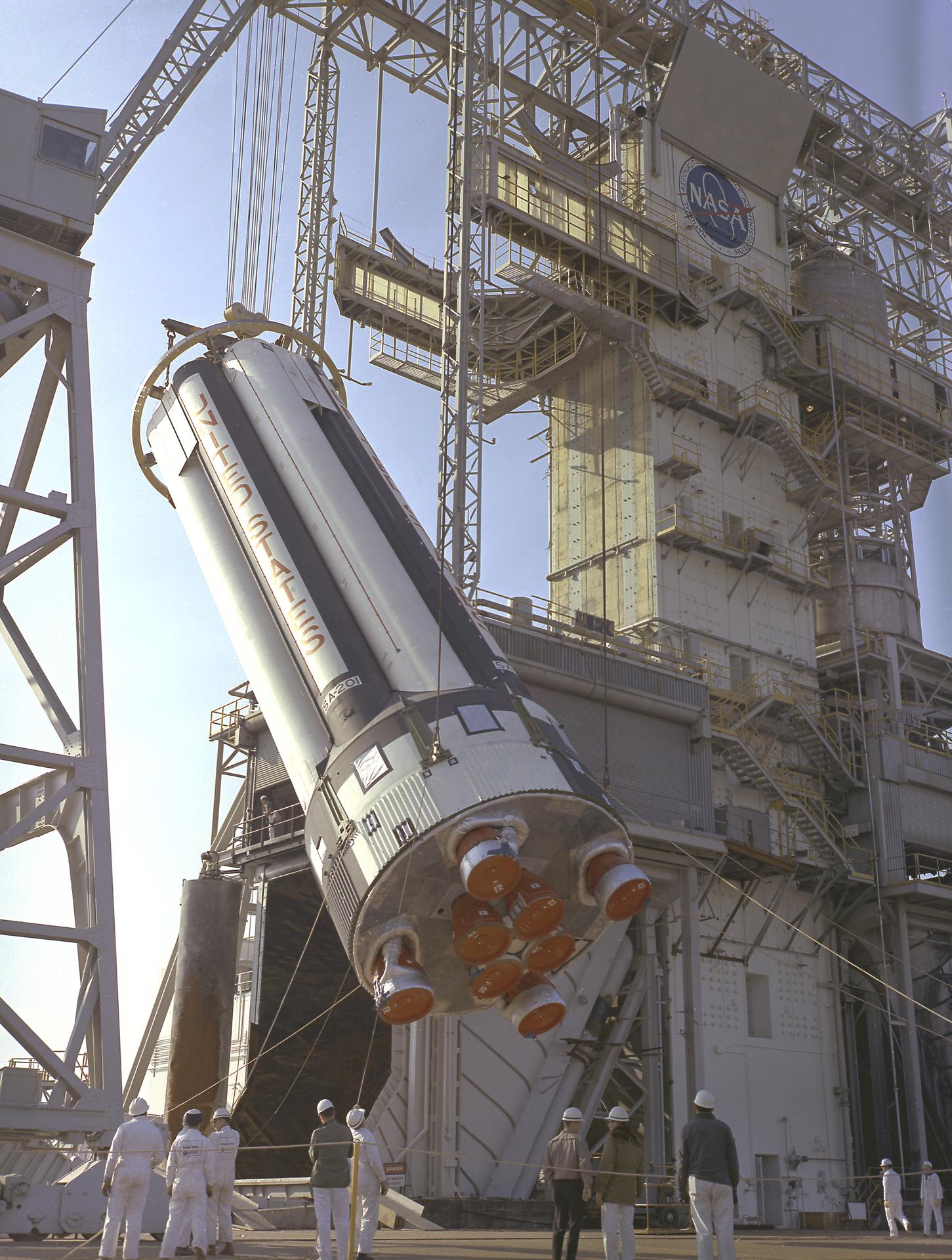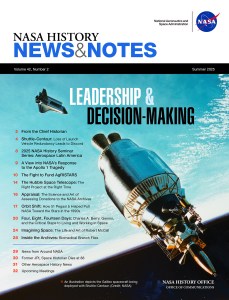The first installment of this mini-series discussed how Skylab, America’s first space station, ran into serious trouble immediately after launching on May 14, 1973. The station’s micrometeoroid shield deployed prematurely 63 seconds into the flight, and aerodynamic forces tore it off the vehicle, removing Skylab’s thermal protection in the process. The workshop’s two main solar arrays failed to deploy. The two events left Skylab in a dangerous condition, overheated and short of power. Managers worried that the high temperature might cause off-gassing of toxic chemicals and the destruction of consumables. Launch of the first crew to inhabit the station was delayed 10 days while engineers, astronauts, and managers developed a plan to save Skylab.
Controllers in Mission Control at Johnson Space Center (JSC) in Houston devised an attitude management protocol for Skylab to optimize power generation but minimize exposure of the station’s hull to the Sun’s rays to reduce the overheating problem until the first crew arrived. Engineers and astronauts at JSC and at Marshall Space Flight Center in Huntsville, Alabama, tirelessly studied sunshade options to cool the station and spacewalking plans for deploying the solar arrays once the first crew arrived.
After evaluating the various sunshade options Skylab program managers selected one that met the criteria of being ready in time for the first crew’s launch, small enough to fit in the Command Module, and not require space walking. Jack Kinzler, Chief of the Technical Services Division at JSC, devised a parasol constructed of aluminum poles and fabric made of nylon, Mylar and aluminum that could be passed through a scientific airlock in the workshop and opened much like an umbrella against the outside skin of the station to protect it from solar radiation. Racing against time the parasol was designed, manufactured and tested in just a few days and stowed aboard the Skylab 2 Command Module the night before launch. For his inventive efforts, Kinzler, who also designed the U.S. flags that Apollo astronauts planted on the Moon, received NASA’s Distinguished Service Medal.
The Skylab 2 crew of Commander Charles “Pete” Conrad, Pilot Paul J. Weitz, and Science Pilot Joseph P. Kerwin launched successfully from Kennedy Space Center’s Launch Pad 39B on May 25, 1973, and six hours later approached Skylab. The crew performed a fly-around of the damaged station and observed that the micrometeoroid shield was indeed missing, exposing the gold surface of the workshop, and that one solar wing was missing entirely while the other one was only partially deployed due to debris from the shield preventing it from fully opening. With Conrad station-keeping the Apollo spacecraft near Skylab, from the open hatch Weitz with Kerwin holding him by the legs performed a 40-minute Stand-up Extravehicular Activity (SEVA) in an unsuccessful attempt to cut away the debris jamming the stuck solar array using a heavy-duty cable cutter fastened to a 10-foot pole. The frustrated crew docked with Skylab (after several unsuccessful attempts) and ended their 22-hour day.
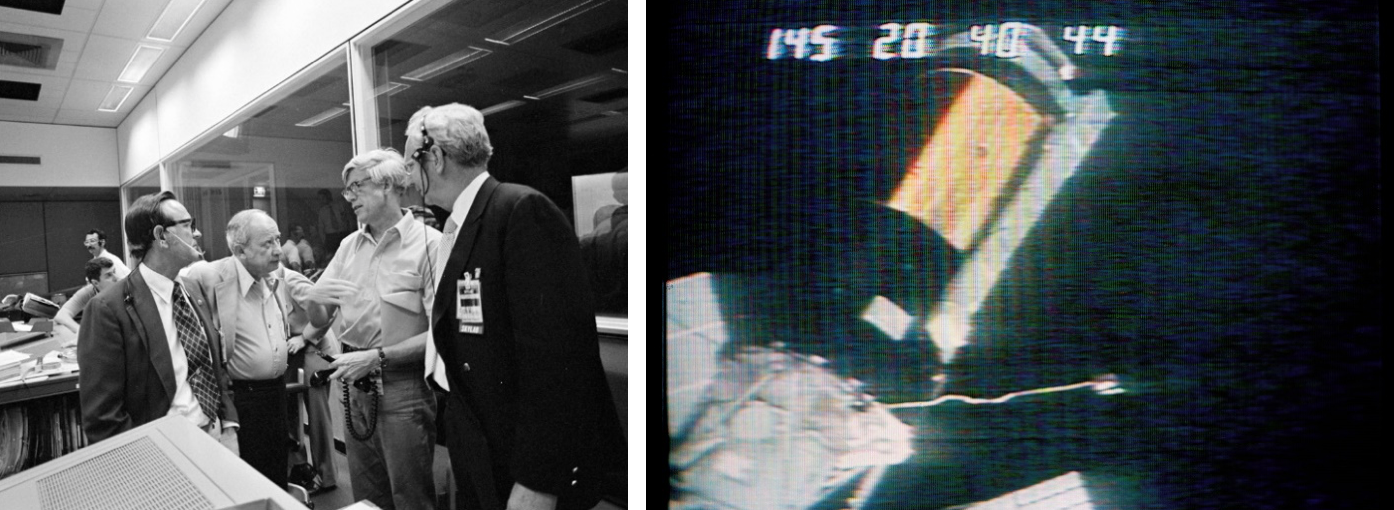
The next morning, they began to activate Skylab, moving through the Multiple Docking Adapter and the Airlock Module and finally into the Workshop, where they encountered 130oF temperatures but no toxic gases. One of the first tasks was to deploy the parasol through the scientific airlock. The crew spent several hours assembling it, taking needed breaks in the Command Module to escape the heat of the workshop. They pushed the parasol through the airlock, the folded arms swung out spreading the fabric, and they then retracted the parasol to be flush with the exterior of the station. Internal temperatures began to drop and within three days were in the comfortable range. As the thermal problem appeared to be solved, the crew settled down to finish activating the station and to begin their science experiments. Their work being hampered by the limited power, the fix-it crew turned their attention to the jammed solar array.
Read Jack Kinzler’s and Skylab 2 back up Commander Rusty Schweickart’s oral histories with the JSC History Office.























